What is a banker plant system and why should you have one?
A banker plant is a non-crop plant that provides alternative food (such as pollen) and/or prey for the rearing and release of biological controls. Banker plants are designed so that natural enemies can reproduce and survive even when pests’ populations are low. For the banker plant system to work it must have a banker plant (non-crop plant), pollen or prey source, and a predator or parasitoid. The idea is to establish a biological control population on the plant and for it to be able to persist even when prey is scarce. This way the biological controls are ready when pests arrive in the growing facility. For reference, a biological control is referred to as the reduction of a pest population by natural enemies. There are many predatory and parasitoid biological controls that can be used in greenhouse applications for pest control, however only certain species are able to be established and maintained on banker plants.
Banker plants can become an economical and long-term, sustainable solution to pest control when used correctly. This approach to pest management minimizes the risk of resistance to pesticides among pests and limits exposure to workers in addition to being less labour intensive as spraying. Using biological controls also has consumer impacts since many customers now seek products that are sustainably grown without the use of pesticides. Banker plants can be advantageous for several reasons including having a higher female ratio of parasitoids, having a better adapted biocontrol to your greenhouse environment, as well as having higher foraging responses in addition to minimizing the expenses of buying and replacing biocontrols continuously.
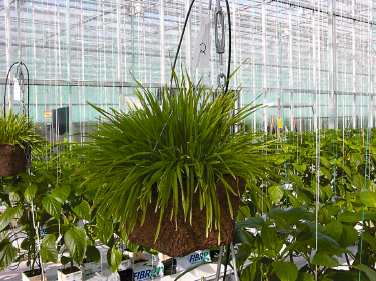
Banker plants should be placed throughout the greenhouse to disperse the biological controls in the crop. Plants should ideally be propagated, and insects reared, in a separate area from the main greenhouse. Either in a large cooler (not cooled) or separate room or corridor, if possible. This is to help establish and keep the population of prey and to avoid greenhouse released bios from entering the rearing and propagation area. Once plants are large enough and moved into the crop, plants should be replaced every few weeks or months depending on the species. Banker plants can be moved throughout the greenhouse into areas of higher pest pressure when needed.
What kind of banker plant systems are there for your application?
Wheat bankers:
The most common banker plant system in greenhouses are the wheat and/or barley banker plants that are inoculated with cherry oat aphids and serve as a food source and habitat for the important parasitic wasp Aphidius Colemani. Colemani is commonly used to manage the green peach (myzus persicae) and/or melon aphids (aphis gossypi). The cherry oat aphids used on the bankers only attack monocots reducing the risk of infestations within most greenhouse crops. Parasitoid progeny reared on banker plants may be more female biased than those shipped in and can be more effective for biological control over time. Colemani has been shown to maintain aphid populations like those from pesticide applications but is safer to implement and more time effective. They also have a high dispersal distance within the greenhouse as well as having a higher parasitism rate compared to other aphid biocontrols.
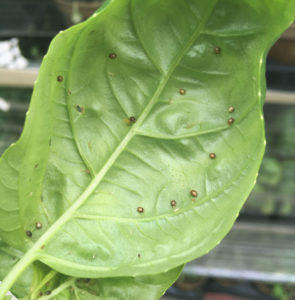
Since Colemani cannot control all aphid species such as the potato aphid (Macrosiphum euphorbiae) or foxglove aphid (Aulacorthum solani) other biological controls need to be released as part of an aphid management program. Aphidius Ervi, while not able to be maintained on a banker plant right now, is a good choice for both potato and foxglove aphids along with the predatory midge Aphidoletes aphidimyza.
Purple Flash and Alyssum Orius Banker
A banker plant for thrips control is the ornamental pepper called Purple Flash, as the pollen has been shown to be a rich food source for Orius Insidiosus (minute pirate bug). Orius insidiosus is an important and voracious predator of thrips – predating on all life stages. Orius can be hard to establish in a greenhouse but can be reared on banker plants to help produce resilient populations. Pepper plants are an excellent food source for Orius and it likes to lay its eggs in the stems and veins of the plant. Since commercial peppers aren’t suitable for many greenhouses, smaller ornamental peppers work best.
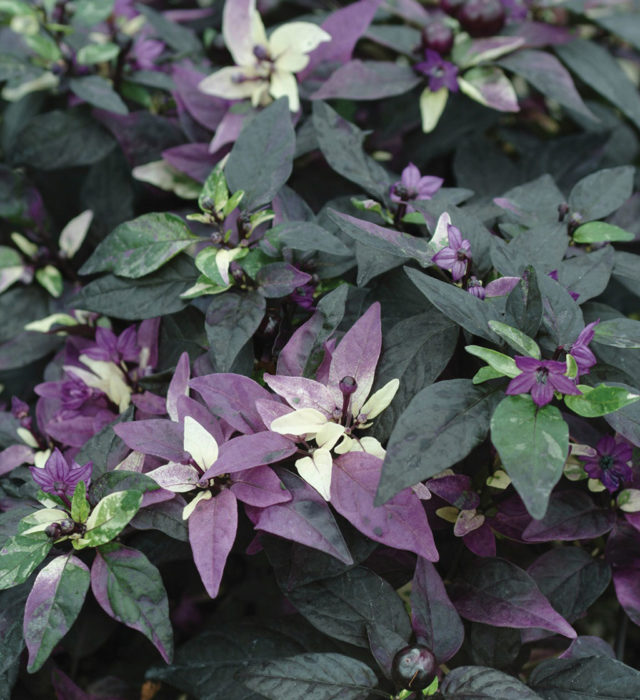
It’s been researched that Purple Flash Peppers can maintain the highest populations of Orius and if used in conjunction with flowering alyssum can be a good method to further establish them. This system can be easily accomplished in hanging baskets by having a pepper in the center surrounded by alyssum plants – this way Orius will always have pollen to feed on. The one caveat is that the peppers must be started early since you need plants to be flowering when Orius are introduced. Starting at least 2-3 months before thrips become an issue will ensure you have flowers and can establish an early population. You would ideally like a month of reproduction on the plants before thrips show up.
Mullein Banker for Dicyphus
Common mullein (Verbascum thapsis) can be an important plant for the rearing of the biocontrol Dicyphus Hesperus where it can complete its lifecycle in absence of prey by feeding on the nectar of the plant. Dicyphus is a generalist predator preferring Greenhouse whitefly (Trialeurodes vaporariorum) and tabacco whitefly (Bemisia tabaci) and will also attack spider mites, thrips, aphids and leafminer larvae. Since mullein is a long-lived crop, replacement is needed only every few months but needs to be started at least 2 months before introduction into the greenhouse since it takes awhile to grow. Overall mullein has been shown to be a very effective plant at establishing Dicyphus populations and to help preserve its population when prey within the crop is scarce.
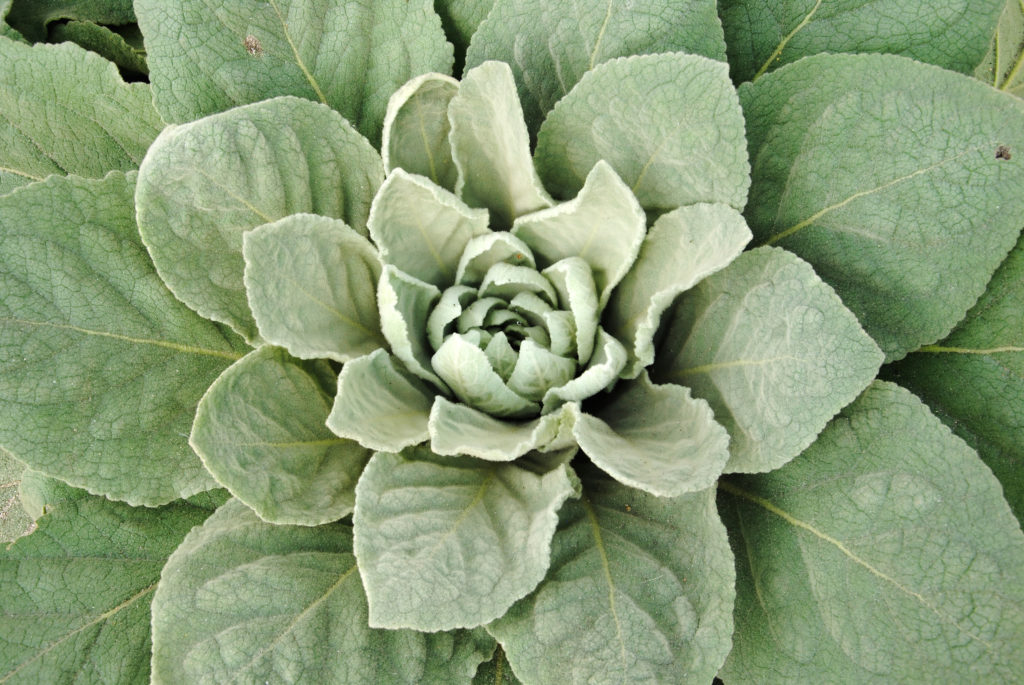
How does lighting play a role in banker plant systems?
Supplemental or sole source lighting can be helpful in propagating and maintaining an in-house banker plant system. As mentioned previously, it is best to have your banker plant propagation area separate from the rest of the greenhouse to avoid any potential disease and pests and to maintain healthy populations of prey and predators/parasitoids. Sometimes these areas may be in small rooms lacking adequate lighting when there is no greenhouse space. For plants such as Purple Flash Peppers, which need to be started in winter months, providing supplemental lights will help speed up their crop cycle while helping to grow healthy plants that will be able to withstand the greenhouse environment and support Orius. Pepper plants in general require a high Daily Light Integral (DLI) for proper development and the heat emitted from the lamps can also help in producing consistent plants in cooler months. In addition, Orius needs a minimum of 12 hours of daylight to avoid diapause and lighting can help them overcome this stage during low light times of the year. Lighting can also be useful in winter months for wheat banker plants and mullein to help speed up germination times.
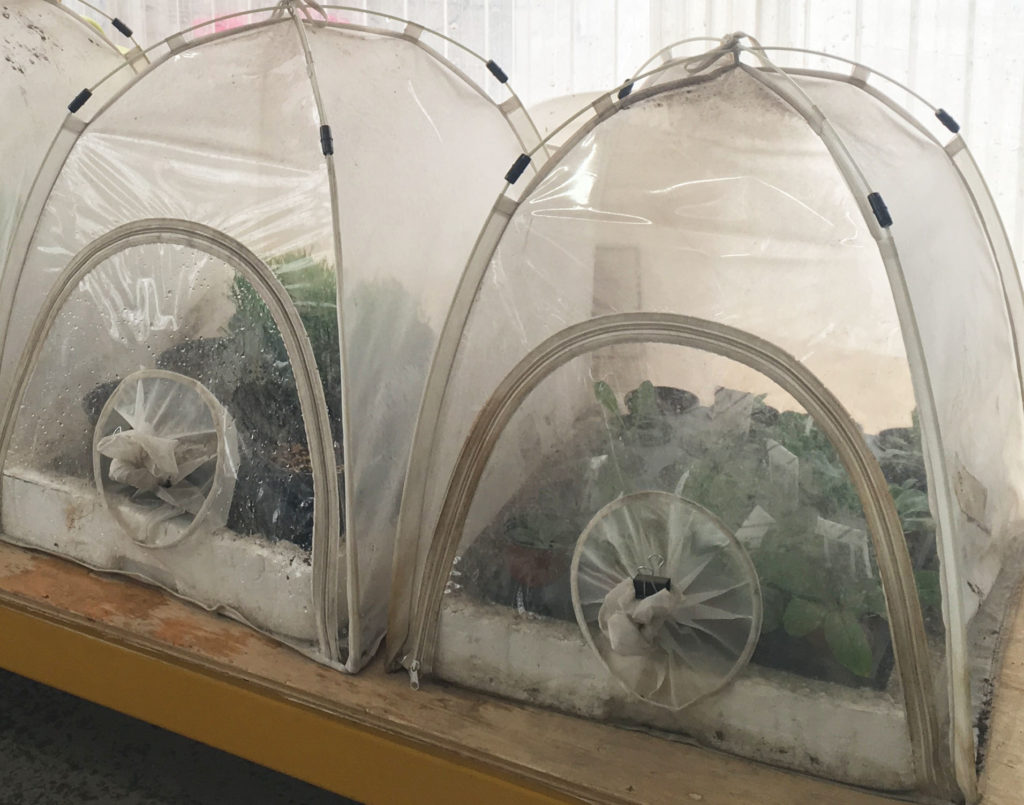
For more information on IPM strategies, biocontrols and lighting refer to our blog post: Pest Management Strategies and Lighting
Integrating Banker Plants with your IPM Program
While banker plants can help provide a sustainable and well adapted population of biocontrols in your greenhouse they cannot control all pest species. As mentioned, A. Colemani can only parasitize the Green Peach (myzus persicae) and Melon aphids (aphis gossypi) and cannot control potato aphid (Macrosiphum euphorbiae) or foxglove aphid (Aulacorthum solani). Other biocontrols such as A. Ervi or Aphidoletes will need to be introduced to help control those populations. In addition, when targeting pests such as thrips, having many kinds of predators is the best way to approach a thrip program than solely relying on one biocontrol. Predators such as mites (A. Cucumeris, A. Swirskii) and parasitic nematodes should also be used regularly. In addition, there is no effective banker plant system for control of pests such as spider mites, mealy bugs, fungus gnats, leaf miner.
For a program to be successful it depends on its implementation. Having a dedicated person oversee the banker program will help maintain its quality and improve its success. One thing that often goes wrong when establishing a banker program is that growers forget to water the plants because they are not part of the regular crop. In addition, wheat bankers need weekly or bi-weekly sowing as they need to be rotated out every 2 weeks to avoid hyperparasitoids and the quality can also diminish over time due to aphid feeding. The numbers needed for each banker plant system will vary on application and pest issues. Common recommendations for placement in the greenhouse are about 2 wheat bankers per acre, 40-100 mullein bankers per acre and about 100 purple flash peppers per acre. In my experience I have used higher wheat banker plants in crops where aphids are prone. Maintaining 100s of large banker plants in an acre of space can be time and space consuming depending on your set up, so starting with lower numbers can likely still result in controlling targeted pests depending on your situation.
Starting a banker program is a long-term solution that should be a preventative measure – you will be less successful if using biocontrols when used as a reactive response. In addition, it can sometimes take a week or two to see an improvement in pest populations when introducing a biocontrol and patience is needed as many biocontrols are not compatible with spray programs. Keeping on top of scouting and being in control of your pest management strategies can help ensure the success of your IPM program.
References:
Buitenhuis, R., Brownbridge M. (2017). How to use non-crop plants in your Thrips IPM program. Greenhouse Canada. Sept. 14-20.
Chiu, G. (2018). The Truth About Banker Plants. Greenhouse Canada Magazine.
Cochard, P., Galstian T., Cloutier C. (2017). Light Environments Differently Affect Parasitoid Wasps and their Hosts’ Locomotor Activity. Insect Behaviour. 30:595-611.
Matteoni, J. (2003). Economics of Banker Plant Systems in Canadian Greenhouse Crops. 1st International Symposium on Biological Control of Arthropods. 154-155.
Payton Miller, T., Rebek E. (2018). Banker Plants for Aphid Biological Control in Greenhouses. Journal of Integrated Pest Management. 9: 1-8.
Prado, S., Jandricic S., Frank, S. (2015) Ecological Interactions Affecting The Efficacy of Aphidius colemani in Greenhouse Crops. Insects.6: 538-575.
Yano, E. (2019) Functions of banker plants for Biological control of arthropod pests in protected culture. CAB Reviews. 14. 006.


